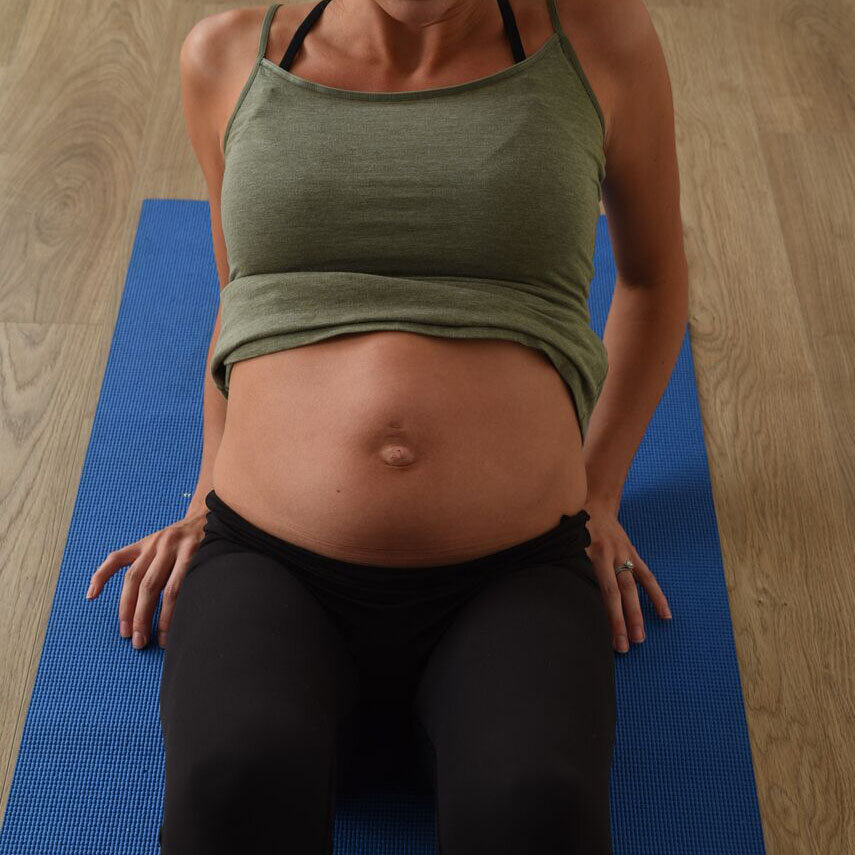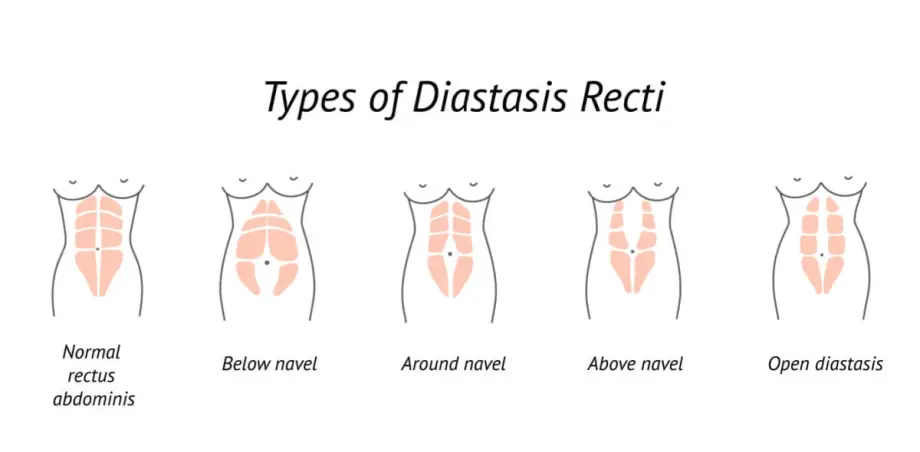Back
Why is my Abdomen Gap still there after birth?
By Shannon Strauch, PTA, STMT-1 on 7/2/2024

Abdominal separation, or diastasis recti (DRA), can be a concern before, during, and after pregnancy. Pelvic floor therapy can play a crucial role in managing and treating abdominal separation. Understanding how it can affect you at each stage can help manage and treat the condition effectively.

Before Pregnancy
Pre-existing Conditions
: Some women might have a mild separation of the abdominal muscles before pregnancy due to previous pregnancies, significant weight fluctuations, or genetic predisposition.Preparation
: Strengthening the core muscles, particularly the transverse abdominis, before pregnancy can help support the abdomen and may reduce the severity of diastasis recti during pregnancy. Exercises like planks, pelvic tilts, and core stabilization exercises are beneficial.During Pregnancy
Development
: As the uterus expands, the abdominal muscles naturally stretch to accommodate the growing baby. This can lead to a separation of the rectus abdominis muscles, which is most noticeable in the third trimester.Symptoms
: A visible bulge in the midline of the abdomen, especially when straining or contracting the abdominal muscles, is common. You might also experience lower back pain, pelvic instability, or a feeling of weakness in the core.Prevention and Management
:Exercise
: Engaging in safe core strengthening exercises can help maintain abdominal strength. Avoid exercises that excessively strain the abdominal muscles, such as traditional crunches or heavy lifting.
Posture and Body Mechanics
: Maintaining good posture and proper body mechanics can help reduce the strain on the abdominal muscles.
Supportive Garments
: Maternity support belts or bands can provide additional support to the abdominal area and reduce discomfort.
After Pregnancy
Recovery
: The abdominal muscles may take several weeks to months to return to their pre-pregnancy state. Some degree of separation may persist, particularly if it was severe during pregnancy.Symptoms
: Postpartum diastasis recti can lead to a persistent bulge in the midline of the abdomen, lower back pain, pelvic floor dysfunction, and a feeling of core instability.Pelvic Floor Physical Therapy
During Pregnancy
Support and Guidance
:Safe Exercises
: Pelvic floor therapists can provide tailored exercise programs that strengthen the core muscles without exacerbating abdominal separation. These exercises often include gentle core stabilization, pelvic tilts, and safe breathing techniques.
Postural Support
: They can help you maintain good posture and body mechanics to reduce strain on the abdominal muscles.
Pain Management
: Techniques to manage and alleviate lower back pain, pelvic discomfort, and other related symptoms can be provided.
Education
:Body Mechanics
: Education on how to move safely during daily activities to avoid unnecessary strain on the abdomen.
Breathing Techniques
: Teaching proper breathing techniques to support the core during activities and reduce pressure on the abdominal muscles.
After Pregnancy
Rehabilitation and Recovery
:Postpartum Assessment
: A pelvic floor therapist can assess the extent of diastasis recti postpartum and develop a personalized rehabilitation plan.
Core Rebuilding
: They guide you through progressive exercises to rebuild core strength and close the gap between the abdominal muscles. This includes exercises targeting the deep core muscles, like the transverse abdominis, and pelvic floor muscles.
Pelvic Floor Health
: Addressing any pelvic floor dysfunction that may accompany diastasis recti, such as incontinence or pelvic organ prolapse.
Functional Training
:Functional Movements
: Training on how to engage the core muscles properly during daily activities and exercises to ensure safe and effective movements.
Gradual Progression
: Gradually increasing the intensity of exercises as the core muscles regain strength and stability.
Ongoing Support
:Continuous Monitoring
: Regular check-ins with the therapist to monitor progress and adjust the exercise program as needed.
Education and Empowerment
: Providing education on maintaining core strength and pelvic floor health in the long term.
General Benefits
Holistic Approach
: Pelvic floor therapy takes a holistic approach, addressing not just the abdominal muscles but the entire core and pelvic floor system.
Personalized Care
: Individualized exercise programs and treatment plans tailored to your specific needs and condition.
Prevention of Complications
: Early intervention and proper guidance can prevent complications such as chronic back pain, pelvic floor dysfunction, and persistent core weakness.
Improved Quality of Life
: Enhanced core strength, reduced pain, and better overall function contribute to an improved quality of life during and after pregnancy.
Addressing diastasis recti at each stage of pregnancy can help manage symptoms, promote healing, and improve overall core strength and function. Pelvic floor therapy is a valuable resource for women experiencing or at risk of diastasis recti, offering comprehensive support and effective treatment strategies to promote healing and overall core health. Looking to optimize your pregnancy journey with pelvic floor physical therapy? Reach out to us at Pelvic Health Center in Madison, NJ to set up an evaluation and treatment! Feel free to call us at 908-443-9880 or email us at receptionmadison@pelvichealthnj.com.
Read More:
How Chronic Pelvic Congestion in Men Contributes to Prostatitis By Shannon Strauch, PTA, STMT-1 on 12/11/2024 How lymphatic issues can cause symptoms of prostatitis Prostatitis and Tight Pelvic Floor Muscles: A Comprehensive Guide By Shannon Strauch, PTA, STMT-1 on 12/10/2024 How a tight pelvic floor can be the reason for prostatitis symptoms
Are you ready to live pain free?
Request An Appointment